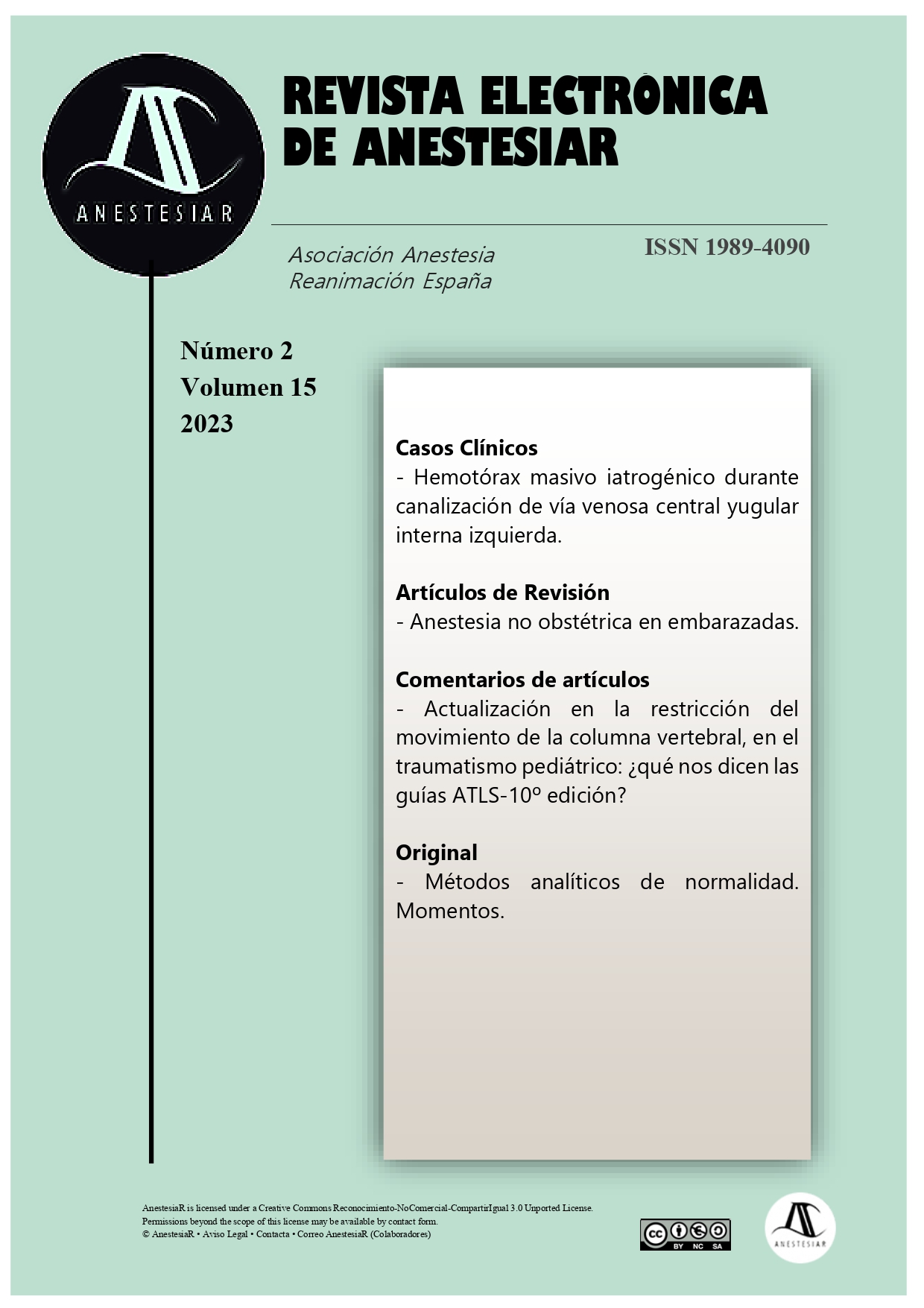Update on spinal motion restriction in pediatric trauma: what do the ATLS-10th edition guides tell us?
DOI:
https://doi.org/10.30445/rear.v15i2.1096Keywords:
pediatric trauma, cervial collar pediatric, cervical collar, cervical collar removal, cervical collar removal in children, pediatric cervical collar removal, pediatric head trauma, pediatric head trauma manage, pediatric head trauma management, Traumatic Brain Injury (TBI), Traumatic Brain Injury children, pediatric tbi, atls pediatric, nexus pediatric, pecarnAbstract
Injuries are the most frequent causes of infant mortality in Europe. Correct management, especially in initial care, is crucial to reduce mortality and long-term complications. To establish a set of common criteria in trauma care, various working groups have been created, "Advanced Trauma Life Support" (ATLS) is one of the most important. It Consists on atraining program and clinical guidelines. In 2018, ATLS presented its 10th edition, where there is greater consideration for special populations such as children. However, in the section dedicated to pediatric spinal cord trauma, the reader continues to be referred to the treatment of adult spinal cord trauma. While we do know that children have a greater impact, of spinal cord injury without radiographic abnormalities (SCIWORA). This article aims to contextualize, in the pediatric patient, the measures proposed in the ATLS 10 ed. for the management of movement restriction of spinal cord trauma.
References
Advanced trauma life support, ATLS®, Soporte vital avanzado en Trauma, 10° ed. 2018 American College of Surgeons 633 N. Saint Clair. ISBN 78-0-9968262-3-5
Rozzelle C, Aarabi B, Dhall S, Gelb D, Hurlbert R, Ryken T, Theodore N, Walters B, Hadley M. Management of pediatric cervical spine and spinal cord injuries. Neurosurgery. 2013 Mar;72 Suppl 2:205-26. doi: 10.1227/NEU.0b013e318277096c.
Phillips N, Rasmussen K, McGuire S, Abel KA, Acworth J, Askin G, Brady R, Walsh M. Projected paediatric cervical spine imaging rates with application of NEXUS, Canadian C-Spine and PECARN clinical decision rules in a prospective Australian cohort. May 2021Emergency Medicine Journal 38(5):330-337 DOI:10.1136/emermed-2020-210325
Weber, A.D., Nance, M.L. Clearing the Pediatric Cervical Spine. Curr Trauma Rep 2, 210–215 (2016). https://doi.org/10.1007/s40719-016-0059-6
Schoeneberg C, Schilling M, Hussmann B, Schmitz D, Lendemans S, Ruchholtz S et al. Preventable and potentially preventable deaths in severely injured patients: a retrospective analysis including patterns of errors. Eur J Trauma Emerg Surg 2017;43(4):481-9
Multidisciplinary Simulation-Based Team Training for Trauma Resuscitation: A Scoping Review. J Surg Educ . 2019;76(6):1669-1680. Cory McLaughlin C, Barry W,Barin E , Kysh L , Auerbach M, Upperman J, R Burd R, Jensen A. doi: 10.1016/j.jsurg.2019.05.002. Epub 2019 May 17
Downloads
Published
How to Cite
Issue
Section
License
Copyright (c) 2023 Revista Electrónica AnestesiaR

This work is licensed under a Creative Commons Attribution-ShareAlike 4.0 International License.
 Envío y derechos de autor
Envío y derechos de autor


 Revista Electrónica AnestesiaR by
Revista Electrónica AnestesiaR by 